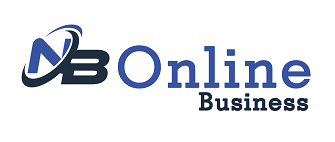If you run a business in Singapore, keeping your accounts in order is more than just good practice – it’s a legal requirement. And one of the most important factors to consider is whether your accounting software meets the guidelines set by the Inland Revenue Authority of Singapore (IRAS).
But with so many options available, how do you know which software is the right fit for your company? This guide will walk you through everything you need to know, from what IRAS compliance actually means to the features you should look for, plus a few tips on making your final decision.
Why IRAS Compliance Matters
In Singapore, businesses must submit accurate financial reports and tax filings to IRAS every year. Using IRAS-compliant accounting software ensures that:
- Your tax submissions are in the correct format.
- Your records meet legal requirements.
- You avoid penalties or delays caused by non-compliant systems.
IRAS also provides a list of accounting software vendors whose products meet their requirements. These systems are designed to support the submission of GST returns and, where applicable, integrate with IRAS’s systems for smoother reporting.
Think of it like driving without wearing a seatbelt – you might get away with it for a while, but the risks and potential consequences simply aren’t worth taking.
Understanding What IRAS-Compliant Software Offers
Before we look at how to choose the right one, it’s worth breaking down what IRAS-compliant software like Million typically includes.
- GST Compliance – If your business is GST-registered, the software will be able to generate GST returns and reports in the format IRAS accepts
- Audit Trail – A detailed log of transactions so that any changes or adjustments can be tracked.
- Data Security – Protecting sensitive financial data from loss or unauthorised access.
- Integration with IRAS – Some systems allow direct submission of certain reports, saving you time and reducing the risk of errors.
- Standard File Format (IAF) – Many compliant systems can produce reports in IRAS’s recommended file format for ease of review during audits.
Step 1: Assess Your Business Needs
Not every IRAS-compliant software is the same. The first step is to understand what your business actually requires.
- Size of Your Business: A small retail shop won’t need the same features as a medium-sized company with multiple locations.
- Number of Users: Will only you and your accountant use it, or will you need multiple staff members to access the system at the same time?
- Industry Requirements: Some sectors have specific reporting or inventory needs, so ensure the software can cater to those.
- Budget: Prices vary widely, so be clear about how much you’re prepared to spend before shopping around.
Step 2: Compare Features Beyond Compliance
While compliance is a must, you also want a system that makes running your business easier.
- Cloud-Based vs Desktop – Cloud systems allow you to access your accounts anywhere, which is ideal for business owners on the go. Desktop systems may offer more control over data storage, but can be less flexible.
- Inventory Management – If you sell physical products, a system that integrates accounting with inventory tracking can save hours of work.
- Payroll Integration – Some accounting software comes with built-in payroll functions that meet Singapore’s requirements.
- Multi-Currency Support – Essential for businesses dealing with overseas clients or suppliers.
- Ease of Use – If you or your team aren’t accountants, a user-friendly interface can make a big difference.
Step 3: Check IRAS’s List of Approved Vendors
IRAS regularly updates its list of accounting software that meets its technical and compliance standards. While not mandatory to choose from this list, doing so gives you the reassurance that the system is officially recognised.
Simply visit IRAS’s website and look for the “Accounting Software Register” to see the latest approved options. If a system you like isn’t listed, double-check with the vendor about its compliance capabilities.
Step 4: Test Before You Commit
Most reputable software providers offer a free trial or demo. This is your chance to see how the system works in real life.
During the trial, pay attention to:
- How easy it is to enter transactions.
- Whether you can generate the necessary GST and financial reports without hassle.
- The responsiveness of customer support.
- Any hidden limitations that might affect your work later.
Step 5: Think About Scalability
Your business might be small today, but what about in two or three years? Choosing software that can grow with you will save you the headache of migrating systems later.
Look for features or upgrade plans that allow you to:
- Add more users.
- Integrate with other business tools.
- Expand reporting and analysis functions.
Step 6: Consider Your Accountant’s Input
If you work with an accountant or bookkeeper, get their opinion before making your final decision. They’ll be able to tell you whether the software is practical for your specific needs and whether it fits into their workflow.
Step 7: Look at Long-Term Costs
It’s tempting to focus on the initial subscription fee, but consider the bigger picture:
- Are updates included in the price?
- Is there a fee for adding extra users?
- What about data storage or backup charges?
A slightly more expensive option might save you money in the long run if it includes all the features you need.
Final Thoughts
Choosing IRAS-compliant accounting software in Singapore isn’t just about ticking a regulatory box – it’s about making your financial management smoother, faster, and more accurate.
Start by identifying your business needs, then compare the features that matter most to you. Always check for official IRAS compliance, test the system before committing, and think about how it will serve you as your business grows.
With the right choice, you’ll not only stay compliant but also free up more time to focus on what really matters – running and growing your business.







